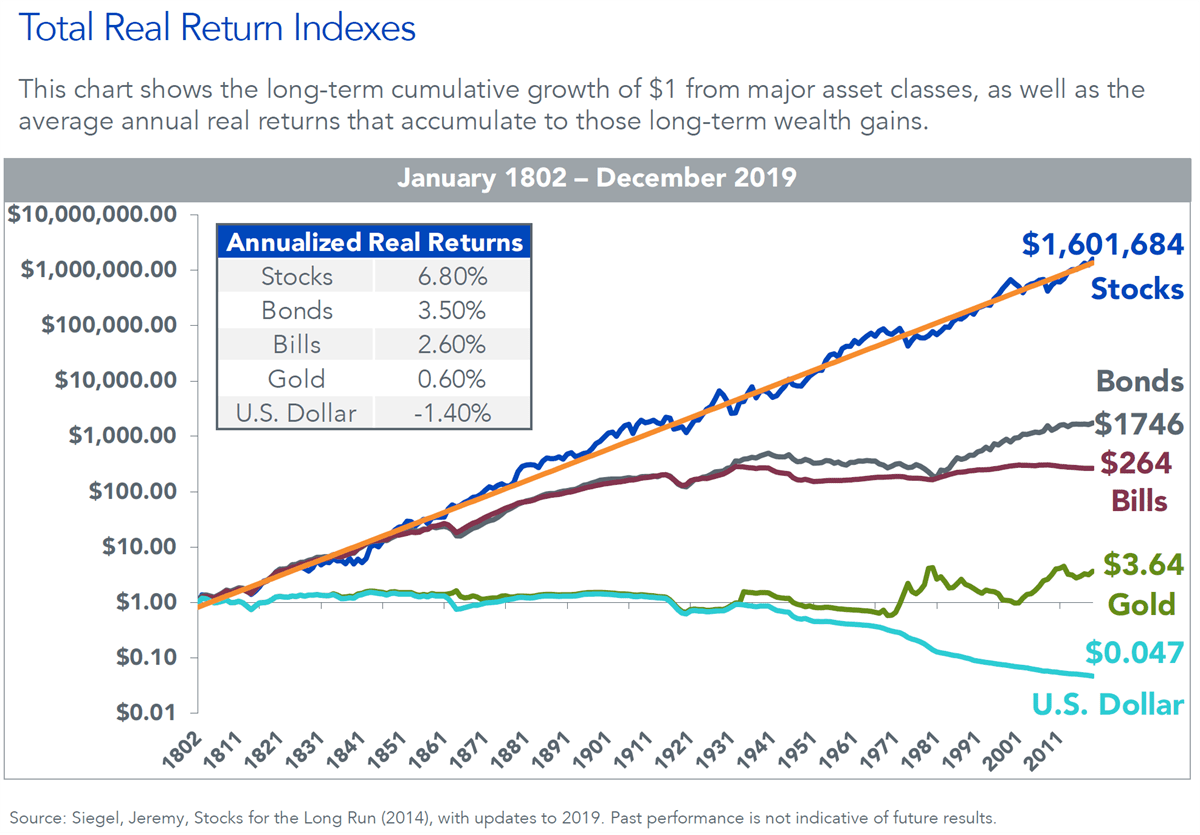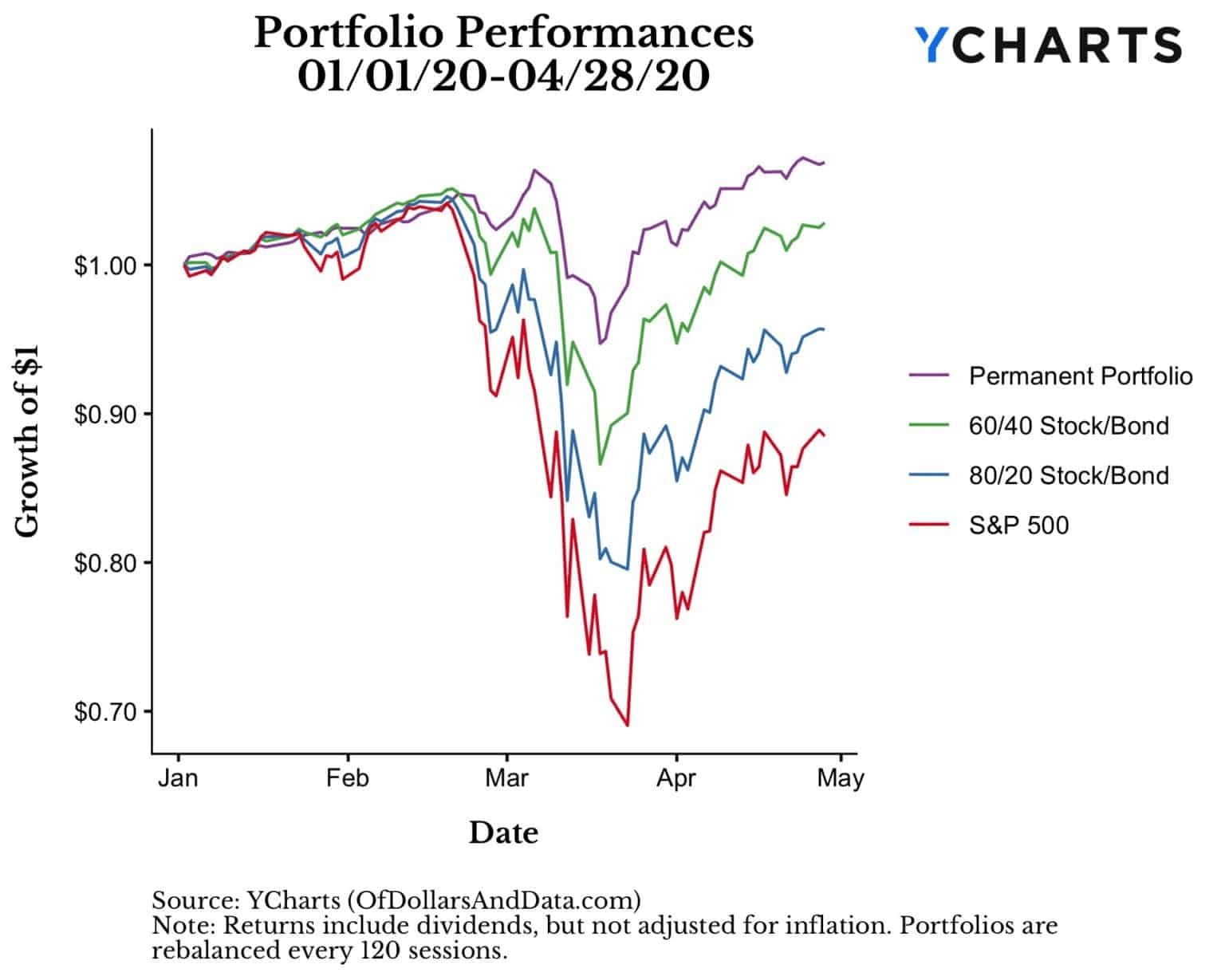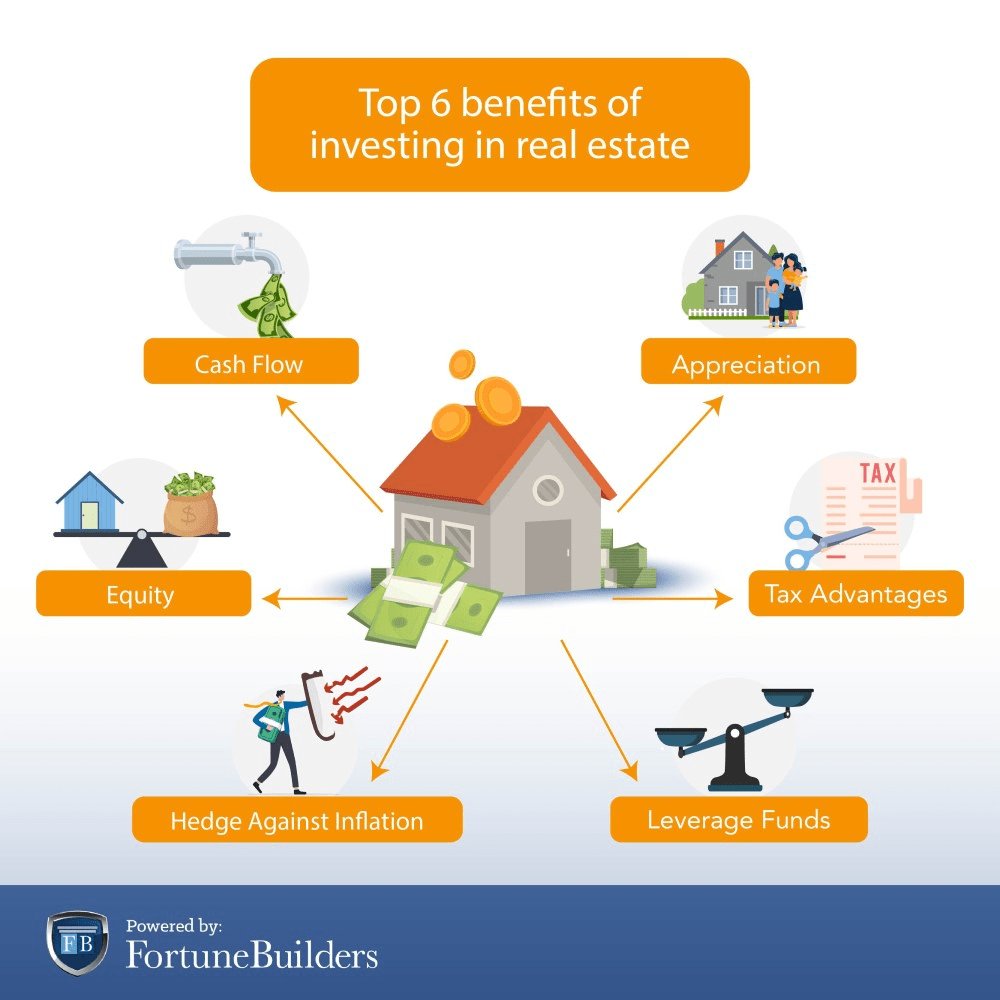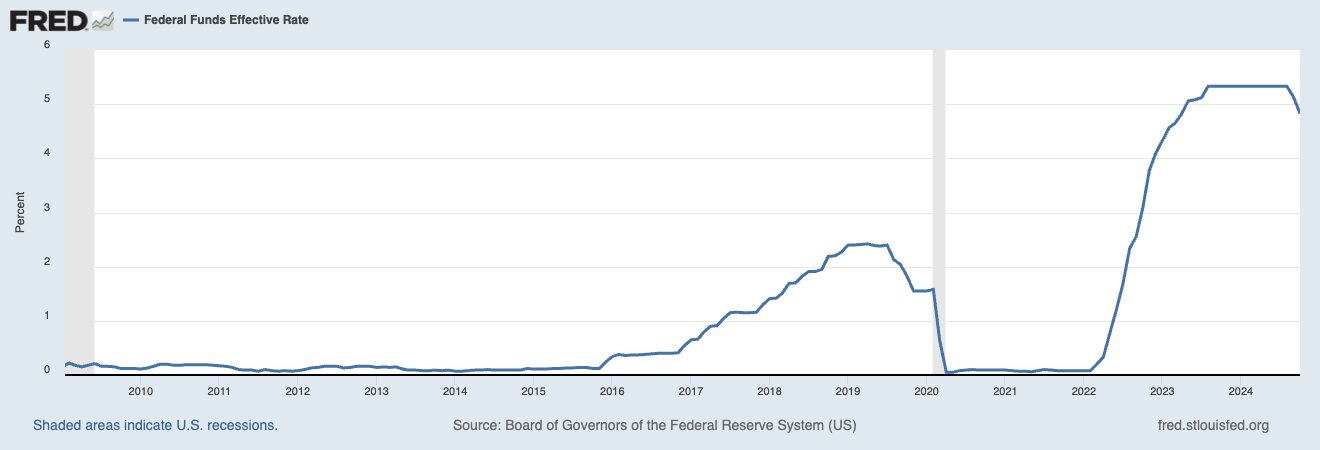The 9 Best Income-Generating Assets

There's a relatively straightforward formula for building wealth:
- Make money.
- Spend less money than you make.
- Invest the difference in income-generating assets.
If you've got steps one and two covered, then it's time to tackle step three — putting your money to work.
This is our list of the 9 best assets to generate income and grow your net worth.
The best part is that these investments aren't exclusive to experienced investors who have a lot of money — anybody can get started with almost all of the assets on this list.
What are income-generating assets?
Income-generating assets are investments that consistently produce cash flow over an extended period of time.
Income-producing assets take multiple forms, from interest-bearing bonds to rental income from real estate property.
If an asset generates positive returns, either in the form of income or appreciation (which can easily be converted into income), it qualifies for this list.*
*This includes stocks — even if they don't pay a dividend. If you're curious why I include non-dividend-paying stocks, see this article.
Summary of the best income-generating assets
| Risk/reward | Timeframe | Minimum investment | |
| 1. Stocks | Medium-to-high | Long | $5* |
| 2. Bonds | Low-to-medium | Short-to-long | $100 |
| 3. Real estate | Medium | Long | $5 |
| 4. REITs | Low-to-medium | Medium | $5 |
| 5. “Cash” | Low | Very short | $1 |
| 6. Private credit | Medium | Short | $500 |
| 7. Peer-to-peer lending | Medium | Short-to-medium | $25 |
| 8. A business | Medium-to-high | Long | Varies |
| 9. Yourself | Low risk, high reward | Long | Free |
*Penny stocks cost less than this, and some brokerages also allow fractional share purchases.
Generally speaking, risk and reward are interconnected. The higher the potential reward of an asset, the higher its risk.
Disclaimer: Ratings are my opinion. Content is for educational purposes only; it is not investment advice. Actual results may vary. Conduct your own due diligence.
1. Stocks
- Risk/reward: Medium-to-high
- Time commitment: Long
- Minimum investment: $5
- Platform: Public
The chart below shows the compounded returns of $1 invested in the major asset classes from 1802 through 2019.
The evidence is pretty conclusive. Stocks are one of the most reliable ways to create wealth over the long run:

Source: Melone Private Wealth
Buying a stock gives you partial ownership of a business. You can become a part owner of the best businesses in the world — Apple, Microsoft, Coca-Cola, and more.
Not only do you become a partial owner, but stocks also require no maintenance from you. You own the business and reap the rewards while management takes care of the day-to-day operations.
You can buy individual stocks — which assumes a higher risk — or you can buy a fund that gives you broad exposure to a large basket of stocks at once.
For example, VOO is a fund that owns 500 of the largest companies in the U.S. (known as the S&P 500). The S&P 500 is one of the most popular investments in the world.
Owning stocks is not always easy, however. To earn the above returns, you'll need to stomach frequent bouts of volatility.
Research shows you should expect to see a 10% decline at least every other year, a 30% decline once every 4–5 years, and a 50%+ price decline a couple of times per century.
For this reason, investing in stocks requires a long-term perspective of 10+ years.
Pros & cons of stocks
Pros:
- One of the most (if not the most) reliable creators of long-term wealth
- Easily accessible to all investors
Cons:
-
Frequent volatility can make it difficult to hold stocks
2. Bonds
- Risk/reward: Low-to-medium
- Time commitment: Short-to-long
- Minimum investment: $100
- Platform: Public
Compared to stocks, which are higher risk and do not guarantee returns, bonds are generally safe, stable, and one of the most reliable income-producing assets.
Bonds are loans made from an investor to an issuer and will be paid back on a specific date, known as the maturity date.
Many bonds also have periodic payments, known as coupons, which are paid to the investor over the term of the loan before the full principal balance is paid back at the end of the term.
For example, if you bought a $1,000 bond and the coupon rate is 5%, paid semiannually, every 6 months you will receive a $25 coupon payment.
Bonds can reduce the volatility of a portfolio. As shown in the chart below, portfolios with more bonds performed better during the Covid-19 crash in 2020:

Source: Of Dollars and Data
The two most common types of bonds are corporate bonds and government bonds.
Bonds issued by businesses are known as corporate bonds, while bonds issued by the government are government bonds (also known as Treasury bonds, since they're issued by the U.S. Treasury).
Corporate bonds are riskier than U.S. Treasury bonds and, therefore, pay higher interest rates.
The U.S. government is considered the most creditworthy (i.e., least risky) borrower in the world.
Since the U.S. Treasury can simply print more money if they ever need to, anyone who lends to them is nearly guaranteed to get their money back.
Pros & cons of bonds
Pros:
- Stable cash flow
- Lower volatility than stocks
- Easily accessible to all investors
Cons:
- Generally lower potential returns than stocks
3. Real estate
- Risk/reward: Medium
- Time commitment: Long
- Minimum investment: $5 or $10
- Platforms: Arrived or Fundrise
Beyond stocks and bonds, another popular investment is real estate.
Real estate investments come with numerous advantages, including investment income, price appreciation, and multiple tax breaks. Real estate is also a good inflation hedge, tending to at least keep pace with rising prices.

Source: FortuneBuilders
However, there are a few downsides.
For starters, the upfront capital required to buy an investment property is typically a down payment of 20–25% of the total purchase price, which can be prohibitively expensive.
Additionally, real estate investors usually evaluate dozens of deals before finding an attractive property.
After purchasing the property, you will need to screen potential tenants and perform ongoing maintenance (or pay someone to do it). Real estate is not a hands-off investment.
If all of this sounds like too much work, you may be interested in Arrived or Fundrise, which are crowdfunding real estate investment platforms.
Each of these has much lower minimum investments ($5 and $10) than a traditional real estate investment, and each has deal evaluation and management teams.
Using one of these platforms is a much more passive form of real estate investing, though your net returns may also be lower after paying their fees.
Pros & cons of real estate
Pros:
- Multiple ways to earn returns
- Can be an excellent source of monthly cash flow
Cons:
- High upfront capital requirements
- Can require ongoing oversight
4. REITs
- Risk/reward: Low-to-medium
- Time commitment: Medium
- Minimum investment: $5 or $10
- Platforms: Public or Fundrise
If you like the idea of investing in real estate but 1) don't want to manage it yourself, 2) don't want to deploy that much capital to an individual investment property, and 3) don't want to invest with a crowdfunding platform, you may be interested in REITs.
A Real Estate Investment Trust (REIT) is a business that is organized solely to own and manage real estate properties.
All REITs must pay out at least 90% of their taxable income as dividends to their shareholders. Given this requirement and the assets they own, REITs are a very popular choice for investors looking for stable, income-producing assets.
Different REITs invest in different types of real estate, including apartment buildings, single-family homes, office buildings, and industrial spaces.
Additionally, REITs can be:
- Publicly traded: Publicly traded REITs trade on a stock exchange like any other company and are available to all investors.
- Privately owned: Private REITs do not trade on a stock exchange and are only available to accredited investors.
- Public but not traded: Publicly non-listed REITs do not trade on a stock exchange but are available to all investors. You can find these on investment platforms like Fundrise.
One of the primary downsides to owning REITs instead of physical real estate is that REITs tend to sell off during stock market declines and are often subject to much more volatility than the underlying assets they hold.
Pros & cons of REITs
Pros:
- Many of the benefits of owning real estate without the management work
- Regular dividends
- Easily accessible
Cons:
- Higher volatility than traditional real estate investments
5. “Cash”
- Risk/reward: Low
- Time commitment: Very short
- Minimum investment: $1
- Platform: Public
When savvy investors refer to their cash balances, they're actually referring to their “cash” balances.
“Cash” is any investment that is FDIC-insured and can be converted to cash at any time. Examples include high-yield savings accounts (HYSA), certificates of deposit (CDs), money market funds (MMFs), and Treasury bills.
Most banks pay barely more than 0% on savings account balances (e.g., mine pays 0.08%). This didn't matter for nearly 15 years (from 2008–2022), as all interest rates were essentially 0%.
However, in March 2022, rates were raised to over 5%:

Source: FRED
While rates have fallen some since then, you can still earn ~4.8% on your money. Despite the rise in interest rates, many banks still pay barely over 0%.
If you have an emergency fund or are saving cash for an upcoming purchase, you should look at transferring this money into a HYSA or investing in CDs, MMFs, or Treasury bills.
You should be able to earn ~4.8% interest on these funds, or $480 for every $10,000 you have saved.
Each of these has FDIC insurance, so your money is as safe in these investments as it is at your bank.
Public users have access to both an HYSA and Treasury bills.
Pros & cons of cash
Pros:
- Earn an essentially risk-free 4.8% interest
- Nearly as liquid as regular cash
Cons:
-
Hard to build real wealth with only cash investments
6. Private credit
- Risk/reward: Medium
- Time commitment: Short
- Minimum investment: $500
- Platform: Percent (accredited investors only)
Publicly traded corporations can raise money by issuing debt in the form of corporate bonds.
Private companies, which don't have access to the public markets, may turn to private lenders for debt financing. Their issuances are known as private credit.
Like corporate bonds, private credit is known for generating stable, reliable returns.
However, there are a few differences that can make private debt a more compelling investment:
- Short-term durations: Most deals on Percent have a maturity period of 9.7 months.
- Higher yields: Deals on Percent have generated a 13.98% historical-weighted average APY.
- Largely uncorrelated: Private credit offers even further diversification than corporate debt, existing completely outside of public markets.
At this time, private credit is only available to accredited investors.
Accreditation requirements
To qualify as an accredited investor, you must meet one of the following criteria:
- Have an annual income of $200,000 individually or $300,000 jointly.
- Have a net worth that exceeds $1,000,000, excluding your main residence.
- Be a qualifying financial professional.
Pros & cons of private credit
Pros:
- Higher yields than most traditional bonds
- Diversification outside of public markets
Cons:
- New deal flow can be slow
- Limited to accredited investors
7. Peer-to-peer lending
- Risk/reward: Medium
- Time commitment: Short-to-medium
- Minimum investment: $25
- Platform: Prosper
Peer-to-peer lending is exactly what it sounds like — you can loan money to other individuals.
Investment platforms like Prosper connect investors with borrowers who may need the money for a wedding, house renovation, car purchase, or something else.
Borrowers make monthly payments that include principal, interest, and any applicable fees. Investors receive their proportional share of those payments directly into their accounts.
Each Prosper loan is given a grade from AA (low risk, low return) to HR (higher risk, higher return). Over the last three years, the average investor on Prosper has a rolling return of 5.4% (net of fees and losses).
These rates are slightly higher than you would earn with high-quality corporate bonds.
However, if you do invest on Prosper or another P2P lending platform, be sure to spread your money across a number of loans so you're not overly exposed to any one borrower.
Pros & cons of peer-to-peer lending
Pros:
- Passive, monthly income payments
- Mid-risk, mid-reward
Cons:
-
If the economy falters, a number of borrowers could miss their payments simultaneously
8. A business
- Risk/reward: Medium-to-high
- Time commitment: Long
- Minimum investment: Varies
- Resources: YouTube, books, podcasts
Starting a business is one of the most asymmetric risk/reward investments you can make.
Jeff Bezos sums up this idea very well:
“Outsized returns often come from betting against conventional wisdom, and conventional wisdom is usually right. Given a 10 percent chance of a 100 times payoff, you should take that bet every time. But you're still going to be wrong nine times out of ten... We all know that if you swing for the fences, you're going to strike out a lot, but you're also going to hit some home runs. The difference between baseball and business, however, is that baseball has a truncated outcome distribution. When you swing, no matter how well you connect with the ball, the most runs you can get is four. In business, every once in a while, when you step up to the plate, you can score 1,000 runs. This long-tailed distribution of returns is why it's important to be bold. Big winners pay for so many experiments.” — Jeff Bezos
Yes, most businesses fail. Starting a business isn't for the faint of heart. If you're on the fence, I'd say don't do it.
But, if you have the passion, skill, and drive to make it work, building your own business can generate more income than any other investment on this list.
Pros & cons of building a business
Pros:
- Very asymmetric risk/reward
- Massive income potential
Cons:
-
Most businesses fail
9. Yourself
- Risk/reward: Low risk, high reward
- Time commitment: Long
- Minimum investment: Free
- Resources: YouTube, books, courses, certifications
One of the most overlooked investments is yourself.
As I wrote at the beginning of this article, the first step to building wealth is making money. Investing in your own education and building your skills can be an excellent way to increase your income and grow your net worth.
Oftentimes, people are far too focused on earning an extra 2% on their investments and forget that they could increase their income by 10% or 20% every few years if they improved their skills and negotiated a higher salary.
Additionally, skills and education stack. Scott Adams, creator of the hugely popular Dilbert cartoon, put it best:
“Everyone has at least a few areas in which they could be in the top 25% with some effort. In my case, I can draw better than most people, but I'm hardly an artist. And I'm not any funnier than the average standup comedian who never makes it big, but I'm funnier than most people. The magic is that few people can draw well and write jokes. It's the combination of the two that makes what I do so rare. And when you add in my business background, suddenly I had a topic that few cartoonists could hope to understand without living it.” — Scott Adams
By stacking two or more skills, you can make yourself much more valuable than someone with only one skill.
Plus, unlike with investments, it's uncommon for someone's salary to decrease over time. Each raise typically becomes your new “floor” in income.
I have personally bought many courses for $150–$500 (mainly writing and investing courses). Each time, I have made many times the cost of the course back, usually in the first 30 days.
Good courses and good books teaching hard skills are an incredible investment.
And even if you don't have money to invest, there is a mountain of free education available on YouTube and at your local library.
Pros & cons of investing in yourself
Pros:
- Can have a very fast ROI
- Extremely asymmetric investment
- A lot of money can be made “stacking skills”
Cons:
-
Takes time, effort, and financial resources
What about art, cryptocurrency, gold, and collectibles?
Alternative investments have become increasingly popular in recent years due to their potentially high returns, diversification, and excitement from the market.
While they can be fine investments — though I personally wouldn't allocate more than 10–15% of my portfolio to them — they aren't income-producing assets. Therefore, they weren't included in this list.
You can still make money from investing in these types of alternatives, but your gains will be from appreciation and speculation, not underlying fundamentals.
Final verdict
While I'm a proponent of investing the bulk of your assets in stocks, bonds, and cash equivalents (which also happen to be the easiest assets to buy), there's no “right” way to invest.
The right portfolio for you will look different than the right portfolio for me.
The most important thing is to build a portfolio based on your financial goals and situation — one that you're comfortable with and confident in.
And don't forget the magic formula: make money, spend less than you make, and invest the difference in income-generating assets.
This is the key to long-term wealth creation.






